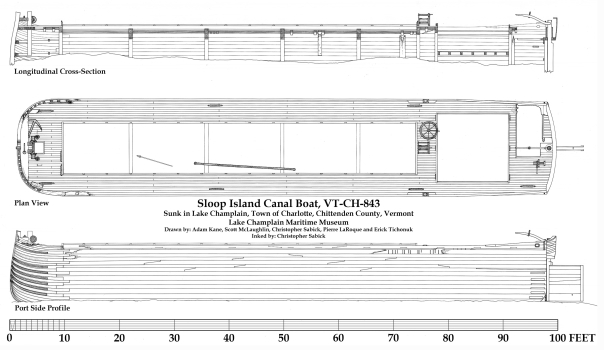 (Intro) With the 100th
(Intro) With the 100th
anniversary of the sinking of the Titanic looming on the watery horizon, commentator and Lake Champlain Maritime Museum
Co-Director Adam Kane, is thinking about what lies at the bottom of cold waters
closer to home.
(Kane) A century ago the world’s unsinkable ship, the Titanic
went down in the north Atlantic’s icy waters.
We all know the story – its place in the popular imagination is nearly
unrivaled. With its tragic, wild descent
into 13,000 feet of black water, it joined what is perhaps mankind’s largest collection
of artifacts from its antiquity. Across
the world’s oceans, rivers and lakes there are spread shipwrecks numbering in
the tens, if not hundreds, of thousands.
Each comes with a story revealing a piece of the human experience.
As the Atlantic was taking the Titanic, Lake Champlain was claiming its
own. Here, however, there were no
headlines in the papers, no investigations, and certainly no movies.
We know Lake Champlain’s victim only as the Sloop Island Canal Boat,
referring to its nearest landmark. For
the last 100 years it has sat serenely in 90 feet of cold water in
Charlotte. On its last journey it was
tied into a tow of a dozen other canal boats all pulled slowly by a
tugboat. These were more than boats,
however, they were homes. This was a
community. Children’s laundry was strung above the cabins, while the smell of
baking bread hung in the air.
It was a 20-year old boat carrying a load of Pennsylvania coal – a
dirty cargo, but one that could always find a buyer. Its crew was a husband and wife, and their
child. The boat’s cabin was small at 200
square feet, but with its cook stove, beds and furniture it was a pleasant
home.
One night that coal proved too much for the boat’s old timbers. A seam opened up spilling coal into the
onrushing waters of Lake Champlain. The
captain tried desperately to save his boat, home and livelihood, but as the
water swiftly rose, he and his wife gathered up their child and a few of their
most important possessions. The boat
could not be saved and they stepped from the deck of their own boat to that of
their next door neighbor’s. The web of
lines holding the tow together groaned as the swamped vessel pulled toward the
lake bottom. The neighboring boats
listed perilously under the burden, but with three swift axe blows the lines
were cut and the boat given to the lake. The family looked on as their home
slipped from view.
The boat’s transition from working vessel to shipwreck was swift, with
a steep descent and a jarring impact on the clay bottom. Trapped air from every crevice pushed hard
for the surface, while the buoyant possessions in the cabin floated free.
There were no headlines, not even a mention in the papers. The sinking of a canal boat carrying only
coal was not news. We know this story
only from exploring what remains of the boat itself and contents like the heel
of a woman’s shoe, scraps of a blue wool coat, gaming pieces. Not titanic in its proportions, but still a
human experience revealed.
